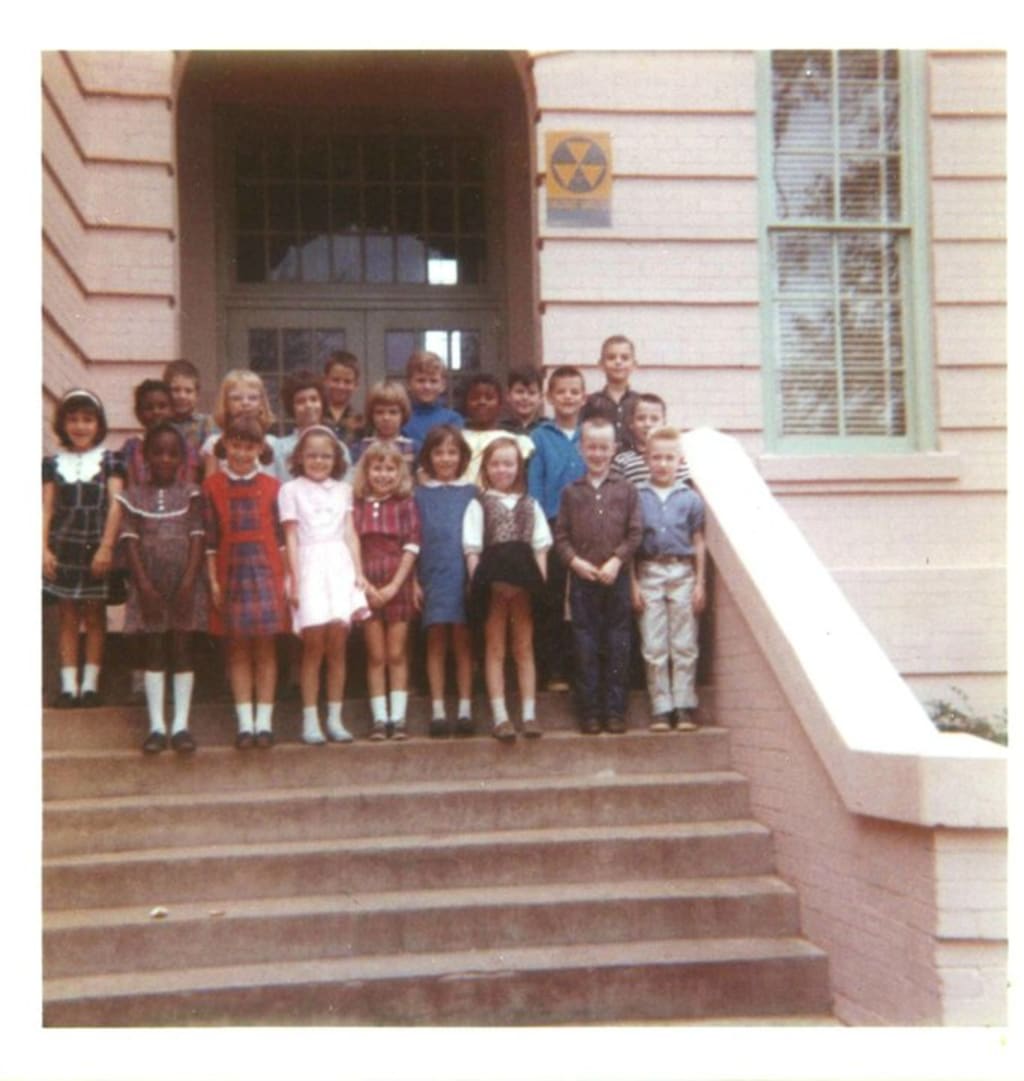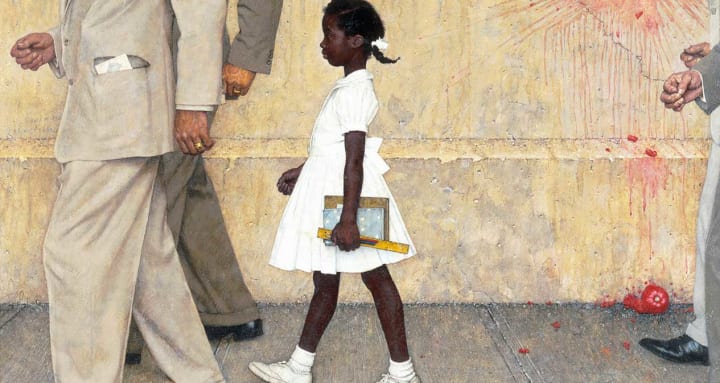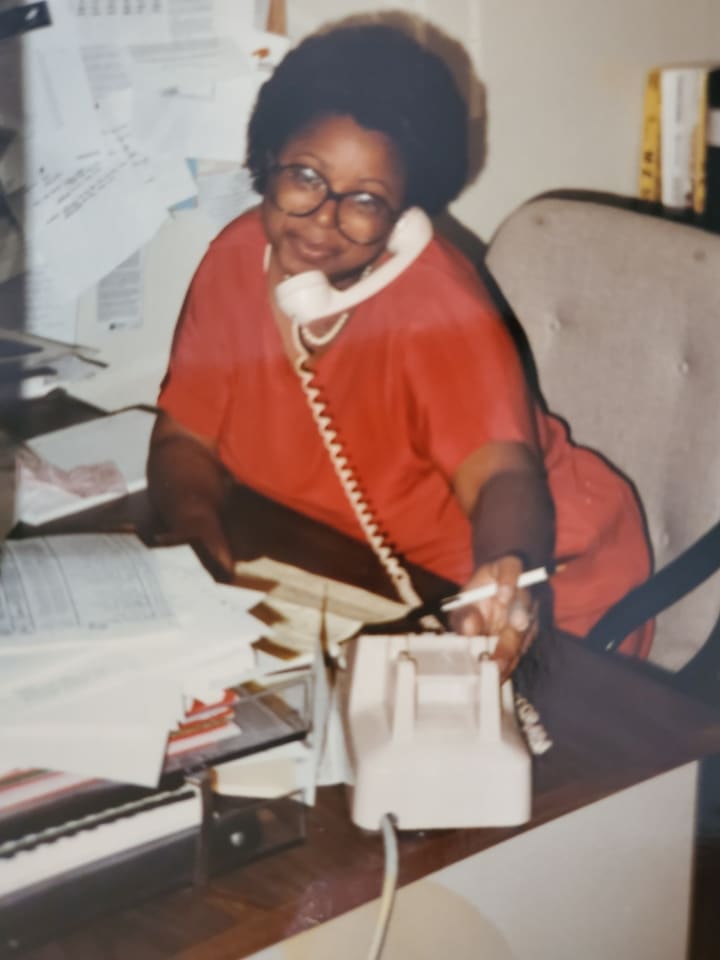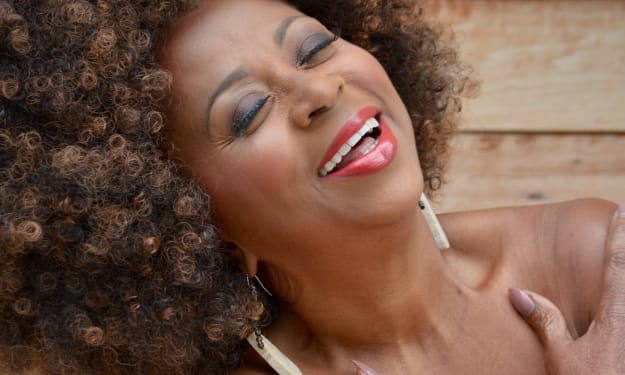LUNCHROOM MISERY
My experience as the second Black student to integrate Sam Houston Elementary School in Marshall, Texas

Usually when you see images of the first Black children to integrate America’s public schools in the 1950s and 60s, they show the Black kids being escorted by Federal Agents or U.S. soldiers to all-White schools as angry White mobs protest their presence.
That’s what happened with the “Little Rock Nine” when they became the first Black students to attend Little Rock Central High School in 1957, the year before I was born. And it happened to Ruby Bridges when she became the first Black girl to attend William Frantz Elementary School in New Orleans in 1960.
Norman Rockwell captured Ruby’s historic walk to school in a famous 1964 painting titled “The Problem We All Live With.” In the painting, a then-six-year-old Ruby is seen carrying her school supplies while being accompanied by four uniformed U.S. Marshals. Scrawled on a wall behind Ruby was the word “NIGGER” and the initials “KKK.” Traces of a tomato that someone had thrown at little Ruby were splattered against the wall while the tomato itself lay on the ground.

If Norman Rockwell had visited my school, Sam Houston Elementary, when I became one of the first Black students to integrate it in September of 1965, he would have had a very different picture to paint.
The Struggle For Acceptance
If Rockwell had captured me during my first days as a second grader at Sam Houston Elementary, the painting would not have shown a little Black girl flanked by four U.S. Marshals being taunted by an angry White mob. Instead, it would have shown a lonely Black girl sitting at the lunch table all by herself. No one threw food at me like they threw at Ruby. The only food in my picture would have been my sandwiches: bologna and cheese, tuna or chicken salad, peanut butter and jelly, pressed ham, and cheese. Sweet treats like Hostess CupCakes, Twinkies, and Sno Balls often completed the menu. Food dulled the pain of isolation and helped me cope with the stress of those first lonely lunches as I struggled for acceptance.
I really missed my friends at Paul Laurence Dunbar, the Black elementary school about a mile from our house. I watched longingly through the window as the neighborhood kids passed my house on Travis Street, on their way to Dunbar.
The difference between Paul Laurence Dunbar and Sam Houston Elementary school was like night and day. Whereas, Sam Houston had nicely manicured grounds enclosed by a beautiful chain link fence, Dunbar sat on a ditch-encircled hill. When it rained, that ditch would fill and overflow with rushing water. I was afraid to jump over the gushing water and my grandmother would have to get out of the car in the rain to coax or lift me over what to me at the time looked like treacherous waters. In fact, my grandparents transferred me to Sam Houston because my grandmother had grown tired of this drill. That’s when she became an activist and jumped on the Brown vs. Board of Education bandwagon and enrolled me in Sam Houston, which was also much closer to our house.
My new school was physically closer, but my friends at Dunbar were still closer to my heart.
Missing My Friends
I missed Amelia—hands down the smartest person in our class. Her mother, Miss Dorothy, made sure of that. Charlotte and I shared the same middle name, and our mothers grew up together. Rene’s house on Johnson Street was one of the few places my grandmother would drop me off to play all day. Barbara always brought the best lunches, certainly the ones with the best desserts. Sheila thought I wanted her boyfriend, but I didn’t care nothing ‘bout no Denny Cooper. Besides, my little six-year-old heart was set on Jesse Fisher. Sheila’s big mama made the best lemon pies in the city. Kathy Diane Jackson, may she rest in peace, always took my lunch. And Esther Davis, my cousin Pettis had a big-time crush on her. Now I only saw these people, my friends, on Sundays at Galilee Baptist Church.
As I made my way to what would become my school home for the next five years, I knew my friends at Dunbar would be participating in first-day-of-school rituals for students at Black schools, getting locker assignments and brown paper book covers, and sandpaper to clean the hand-me-down textbooks from the White schools. At Sam Houston, I had no idea what I would be doing, or more importantly, who I would be eating lunch with.
The White kids at Sam Houston weren’t mean to me. They just didn’t know me. I didn’t know them, and they weren’t in a rush to get to know me. So, lunch was a difficult time, especially since I was such a social person back then. But my grandmother always made sure I had plenty to eat. She even reluctantly made BLT for me after I saw one of my White classmates with one and wanted the same thing, my attempt to fit in. No longer content with a brown bag, I begged for a lunch box with a thermos. I eventually got it, too.
Finding My Place
After several weeks, I became more comfortable and made a place for myself at Sam Houston. I took to heart my grandmother’s simple advice to “do your best.” Over the years, I grew to love my time at the school, as well as my teachers and classmates. Still, it wasn’t exactly a piece of cake.
I was the biggest kid in my class, but I felt like I had to fight for visibility. And sometimes I suspected that my size and color were getting in the way of things I wanted. I remember when our music teacher, Mrs. Shaw announced that our class would perform the “12 Days of Christmas” for the upcoming holiday program and that everyone would have a part. I was excited at first, but my delight soon turned to disappointment when I learned that I had been selected to be one of the five golden rings. Not that golden rings aren’t precious and cool, but I wanted to be one of the beautiful, graceful swans and wear the pretty petticoats. The swans were clearly the stars of the production. After class, I approached Mrs. Shaw and told her I wanted to be a swan. If she was surprised by the boldness of my request, she didn’t show it and was rather matter of fact in her refusal. While she didn’t say it directly, I got the message: “You’re too big and too dark to be a swan.” I guess I should have been happy I wasn’t the partridge in the pear tree.
As trying as it was being one of a few Black kids in Ms. Eubanks’ second grade class, and one of a handful in the entire school, it presaged the various social situations in which I would later find myself in college and in my career, as the only person of color, or one of a few, in the room.
Workplace Parallels
That’s how it was when I accepted an entry level position at the advertising giant J. Walter Thompson as an assistant to Donna Wald, one of the most powerful women in the Dallas media market. It was the end of June 1981, and after five years, I had finally received my B.A. in Radio and Television from the University of Texas at Arlington. I would be earning $10,800 a year, which was decent money at the time. I felt lucky and grateful to have landed such a coveted position. While I was in college, I heard repeatedly that it was tough to get a job in advertising, and even tougher for Black folks to break into this competitive and overwhelmingly White field. In a way, it was true.

I sensed how difficult it was to break into the business when interviewing for a position with Blair Radio. I researched Blair Radio prior to the interview, and I let them know it. Blair was a top tier organization. I was nervous, but confident and delighted that I didn’t have to take a typing test. A few days later, sales manager Randell Harris called and said they offered the job to someone else. I was crushed. He quickly halted my disappointment, assuring me with his next words, “Don’t be upset. We like you. And we called around to see who else was hiring. Call Donna Wald, now. She is looking for an assistant. Here is the number. She’s expecting to hear from you.” In an industry known to be cutthroat, this simple, selfless, and unexpected kindness changed the trajectory of my career and life.
My first day at work, I was 30-minutes early, ready to get every available worm. I was excited and intrigued as I entered 13700 Park Central. I had no idea what was waiting behind door #300. I thought I kinda knew, but I really didn’t.
I was happy and pleasantly surprised to see two other sistahs in the mix. I was in, but like those early days at Sam Houston Elementary, I still didn’t fit in. I was once again the biggest one in the room, but this time it was the conference room instead of the classroom and the lunchroom. It was like elementary school all over again.
During my first country club lunch, I heard the term “expense account.” Who knew? When I first saw a bagel, I said something like, “Look at those giant donuts!” Talk about embarrassment. I might as well have worn a button that said, “Hi, I’m a country bumpkin.” Nor did I know what to drink at happy hour. Or what makes chicken salad gourmet. Or what to wear for a network premier party.
Soon after attending my first premier party, I figured out why I might have been passed over for other positions. The room was filled with Amys, Beckys, and Mollys with Farrah Fawcett hair and Bally Fitness bodies. While I was smart and personable, I could not check any of those boxes—big blonde hair and beach body—just as in those early days at Sam Houston.
My grandmother’s sage advice, my best effort, attitude, and hard work—I soon learned were only getting me so far. As I struggled to fit in, I turned to food for comfort, just as I had during those early lonely days in the cafeteria at Sam Houston.
A Constant Companion
That pattern would repeat itself throughout my career in advertising, as I endeavored to live the financially secure life my grandmother envisioned for me. I loved my job and realized I was blessed and privileged to contribute in a way that was meaningful, interesting and a ton of fun.
But even as I rode the wave of success in my professional life, no matter the time, circumstance, situation or event, food remained my constant companion in the stressful world of advertising sales.
This went on for more than 40 years as I freely moved in and out of broadcast organizations — from Dallas to Washington to Atlanta, and back to Washington. My career in advertising and sales included decades of work for major media outlets like ABC, Disney, and Radio One. I negotiated client campaigns for household brands like McDonald's, T-Mobile, and Coca-Cola.
Entertaining clients at restaurants and venues citywide became the way of my life. As the cycle of eating continued, I eventually ended up in a situation where food threatened not only my life but my very livelihood. The two, you see—food and work—became so intertwined that I used the former to help me cope with the stress of the latter. Until one day, it all came to a head.
Breaking Through
It was one day in early September 2018. I had just scarfed down five, giant slices of veggie pizza during a business conference, in Crystal City, Virginia. I had not binged on pizza in years. Something was seriously wrong.
All throughout the conference, my colleagues from around the country were networking, socializing, meeting for happy hour after the sessions, revisiting the day’s discussions and deepening their personal and professional connections—the kind of connections you make when you share a bucket of chicken wings and a cold craft beer or a glass of wine. Since I lived in the vicinity, I did not book a hotel room. At the end of each day, I returned to my home and missed the camaraderie that these types of conferences offer. It left me feeling disconnected, out of place, different. And the fact that I was slowly regaining weight that I had previously lost did not help.
On the final day of the conference, it had all gotten to me. Despite my professional success, my personal success—at least in terms of losing weight—just could not match it. I felt like a personal failure. You might as well have called me a “D” student: disgusted, disappointed, desperate, and distraught over these demons I thought I had defeated.
I left conference and rushed to my doctor’s office in search of answers. I was miserable. I didn’t need another diet, but I definitely needed something. I owed it to myself to at least try a program she had mentioned in the past. As I readied my arm for the shot, something inexplicable happened to me—a special kind of determination and understanding rose in me. I battled with my weight all my adult life, constantly yo-yoing up and down. But on that day, I made an important mental shift and began winning the war. And now three years later, my mind, body and food are at peace.
Recently, the organizers of that conference asked me to participate on an upcoming panel. I guess I fit in better than I thought. And if they serve pizza, that will be perfectly okay.
About the Creator
Michelle Petties
We all have unique stories that lead us. I speak to organizations, large and small, sharing unique perspectives and my story of hope, healing, and triumph. Need an engaging, thought-provoking, and transformative speaker? Ping me.






Comments
There are no comments for this story
Be the first to respond and start the conversation.